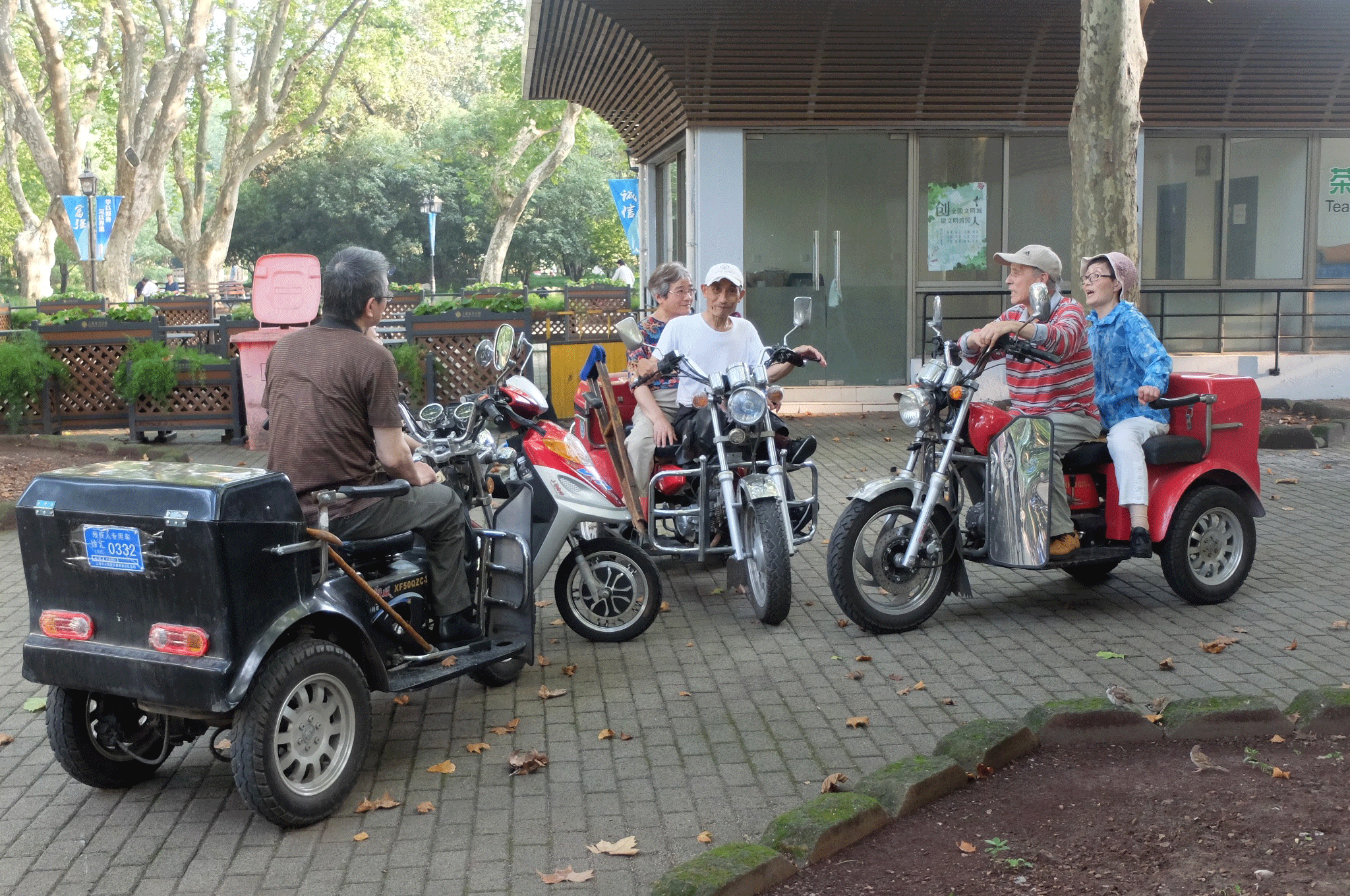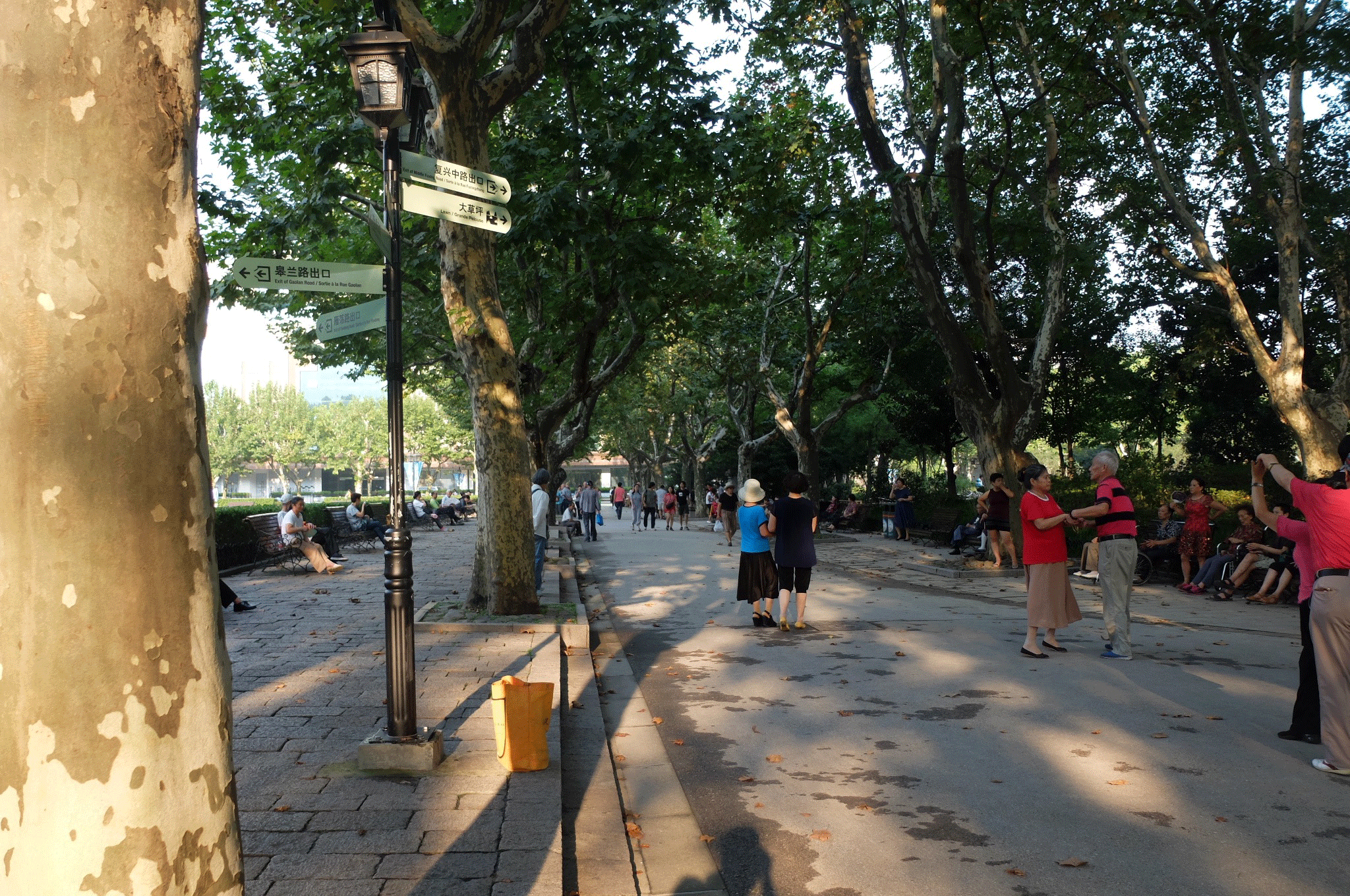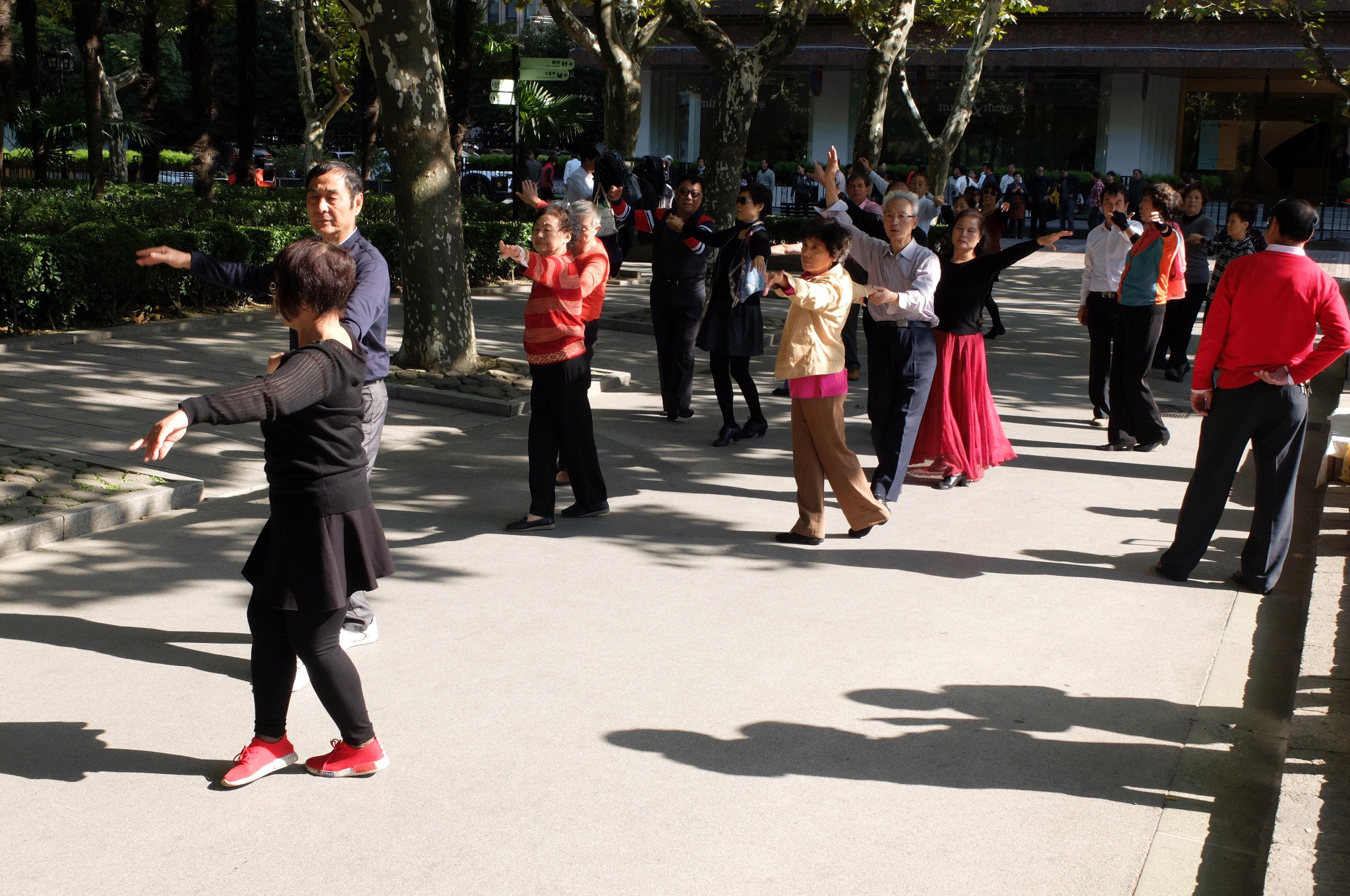Fascination at my fingertips
A real-life lab for the elderly population in China
I live within walking distance of a behavioural gold mine called Fuxing Park. Before I jump into the marvels of this vibrant ecosystem, it’s worth explaining the context; why I’m excited at the prospect of it being my very own real-life lab for the next year.
I’m not entirely sold on the quality of the singing but the group get top marks for enthusiasm.
A prelude
I’m interested in the ageing population and the practical concerns it presents to societies around the world. The old age dependency ratio is increasing. Projections indicate that by 2050 there will be more people aged 60 or over than youth aged between 10-24 (2.1 billion versus 2.0 billion).¹
We need to improve care services. But we also need to find ways to enhance people’s lives as they get older; enabling them to live independently without care for longer — or even reimagining what care is and how it is delivered.²
Part of me was initially disheartened when I knew we were moving to China. I had planned a piece of UK-wide research about this topic and thought that the move would mean putting it on hold.
So it was a welcome surprise to learn that our new home is next to a hub for Shanghai’s elderly. It quickly became clear that this year could serve as a sort of prelude, informing that eventual piece of work.
Only four players left in a card game that has lasted the afternoon.
A self-organising Butlins
Fuxing Park (复兴公园) is a large green space located on the western edge of Huangpu, central Shanghai. The bold sycamores ease air pollution anxieties that exist on days when the wind blows over Shanghai in the wrong direction. But what I like most about the space is its inhabitants.
The space is about 10 hectares in size, within which people are engaged in all sorts of activities: singing, dancing, music practice, massage, mahjong (game), to name a few. The people are self-organising. The sense of community is palpable.
Park politics
Everyone is welcome in the park, but its inhabitants split roughly into three groups:
The regulars They are the engine. There has been little diminishment in activity as I have observed the regulars from balmy late summer into crisp autumn and now winter. Levels of commitment and enthusiasm are largely unaffected by temperature and weather.
Unpacking their chairs at 6am; still in the park as the sun sets.
The weekenders During the week, it’s common to see grandparents dotingly looking after a grandchild. At the weekend, the middle generation arrive. They typically are friends and family of the regulars. The numbers swell and the sense of intergenerational mingling is more apparent. It can feel like a festival.
A moment of peace in a playground for all generations.
The onlookers The layout of the park, with its wide French boulevards, facilitates observation. It allows onlookers to watch the activities without feeling intrusive.
The wide boulevards also make it easy for covert behaviour explorers to fall into the crowd.
Organic inspiration
I’ve thought a lot about what opportunities exist in relation to elderly people at home; services that draw inspiration from cohabitation, smart home technology and digital health innovations. But living next to Fuxing Park is helping me understand the importance of community for elderly people outside of the home.
The quality of life that the elderly have cultivated is enviable. The park plays a vital part in people’s sense of worth, shaping the way they choose to spend their days; how they carry themselves; and the confidence within which they interact with each other.
What’s most interesting about this thriving community is that it has grown organically. Surely a ‘bright spot’ for further investigation?³
What’s driving this unique atmosphere?
1. Permission to perform
The ease with which the physical space allows onlookers to amble from one activity to the next can feel reminiscent of people at a zoo. That said, there is an exciting atmosphere of performance in Fuxing Park.
Why are they all facing the same direction and not each other?
At first, I thought that the performers’ awareness of their audience somehow devalued the authenticity of the activities. But looking at these elderly people performing — at the confidence and happiness in evidence — it feels like their awareness of the onlooker is part of their motivation. Anyone who has bowed in front of an applauding audience will know what I’m getting at.
Observing this dynamic got me thinking about how this motivation would translate digitally.
Brands creating health and wellbeing products need to build in mechanisms that keep users engaged and motivated. For younger generations, having a digital audience — no matter who they are or where they are based — might drive participation. But can the same be said for elderly groups, or do they need something more tangible than ‘networked publics’?⁴
2. Focus on the collective
There is a sense of camaraderie in the way people commit to activities in Fuxing Park. The group focus seems to dilute any self-consciousness that exists. It’s liberating to witness people fully committing, without embarrassment — something I feel is rare to come across back in the UK.
It’s the norm for people to commit fully to the task at hand.
Are the elderly people getting more out of the activities because they are putting more in? I’ve observed countless interactions that demonstrate a sense of group achievement: whoops of joy as a dance routine is perfectly in sync; celebratory hugs as friends reach 20 in a badminton rally.
It makes me the consider the relationship between cultures that have collectivist roots and behaviour change initiatives; how the former would shape the recipe for success of the latter.
3. The mobile-first element of daily life
This is not an ancient group cut off from the ways of the modern world. Like everyone else in mobile-first Shanghai, they use the services available to them to facilitate daily life.
The regulars of Fuxing Park seem more confident using technology than people of a similar age in the UK. They order food from mobile delivery services like ele.me (饿了么) and check Group schedules to see what time a class kicks off. If someone is not confident using a smartphone, it’s likely they have a friend who is.
This familiarity with WeChat is bound to shape elderly people’s adoption of emerging digital health services.⁵ But what questions does it raise for people innovating in this space?
One challenge for brands building independent health apps for this market is that they will be competing with services that exist within WeChat.
WeChat enables new services to appear in-app that look and feel like services people already use. This seamless in-app expansion helps people do more with their smartphones without having to master the UI on another single function app.
4. Collective care
The elderly here contribute to the livelihood of the collective in ways they can: physical tasks like wheeling an electric piano round the park; holding court in a circle of afternoon storytelling.
I’ve considered dressing up in disguise to get closer into the circles of storytelling.
This contrasts starkly with the well-documented portrayal of the British elderly, feeling invisible and isolated.⁶ It’s unlikely you would see elderly people existing as a unit in such a way in most urban parks in London.
Mutually caring and being cared for feels golden. But what’s driving it?
It’s possible that this tribalism has developed as elderly people realise their children cannot look after them in the way they looked after their own parents. If daily care from your children is not practically viable, why not care for each other?
This potential clash between Confucian virtues of filial piety and the realities of economic progress is something I intend to explore more. I want to understand what pressures working Chinese adults face when planning their parents’ futures.
There is an opportunity for brands here to anticipate clashes and build solutions that help people bridge the dissonance between their ancient roots and the realities of the modern world.
Categories beyond social care and healthcare would benefit too from understanding this tension: for example, the booming travel and hotel industries that will come into their own as Chinese New Year approaches.
From pure observation to active participation
To date, my thinking is based on pure observation. But I intend to return to the park with a local researcher, to speak with the familiar strangers I’ve come to recognise.
This two-stage approach is a deliberate choice designed to make a strength of my key weakness out here, which is that I don’t speak Mandarin.
My main objective is to explore what opportunities might exist for brands creating services for the elderly population. But I’m also hoping to glean some methodological findings as I document the differences between passive observation and active participation.
For now though, it’s back to the park… this time armed with a wingman and a voice-recorder.
Amy Sherman is a global behaviour explorer and design strategist. To follow more posts like this please connect to Medium, Instagram or Twitter.
Footnotes
[1] The United Nations website shares 2017 highlights about the ageing population.
[2] These ambitions certainly speak to the 90% of elderly Chinese people who take care of themselves. The Chinese government often refer to the “90–7–3 model”, whereby 90% of elderly people can take care of themselves, 7% need home-based care services, and the remaining 3% require institutional care. In Shanghai and Beijing, it’s said the model is more like “90–6–4.” See this Sixth Tone article which discusses this in more detail.
[3] The idea of focussing on the ‘bright spots’ when trying to understand and change behaviour was introduced to me in Chip and Dan Heath’s book, Switch: How to Change Things When Change is Hard.
[4] To learn more about networked publics read Danah Boyd’s work.
[5] See Dionigi (2015) as an example. The paper outlines the positive and negative stereotypes of ageing and summarises the fluctuating definition of what constitutes “good health” means during older age.
[6] See Sun (2016) to get an idea of the current investment landscape into China’s digital health market. In 2016, China accounted for 37% of the mHealth market in Asia.







